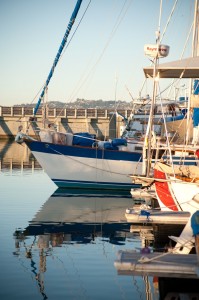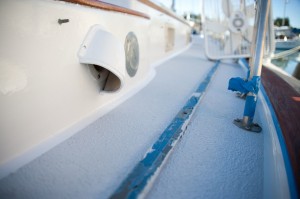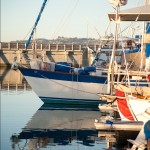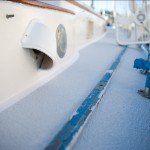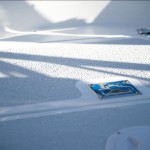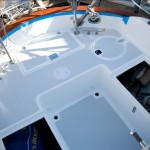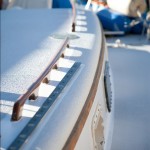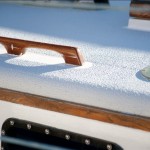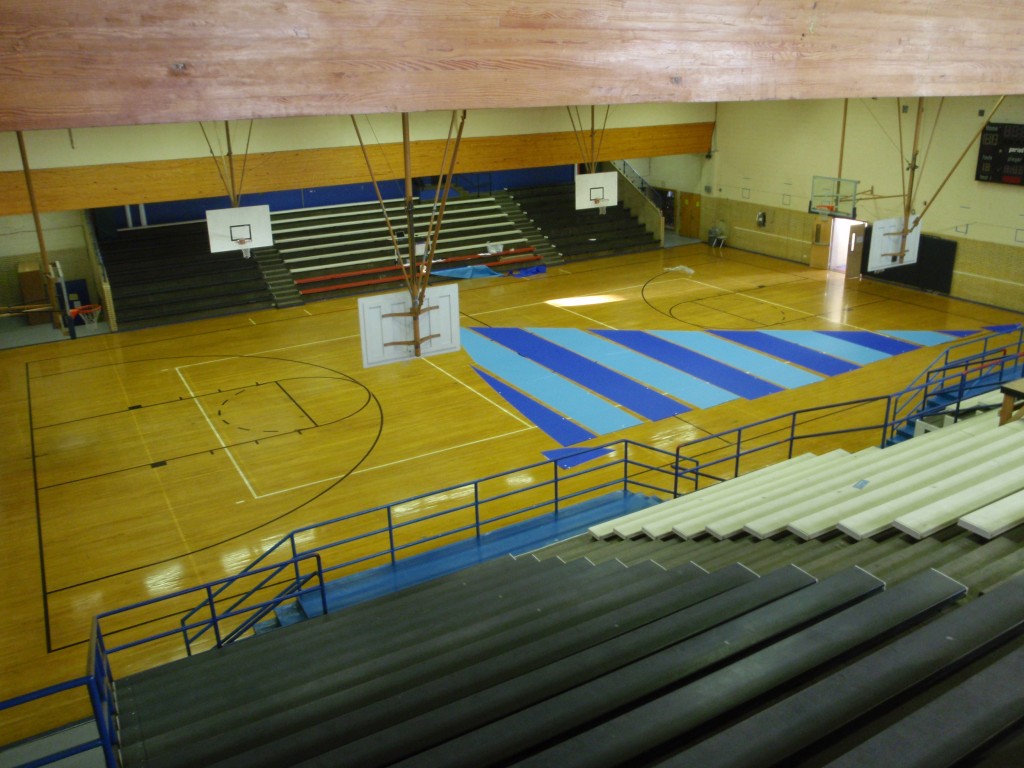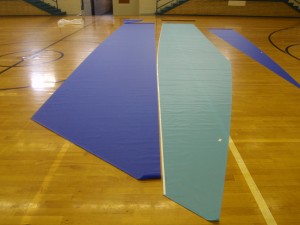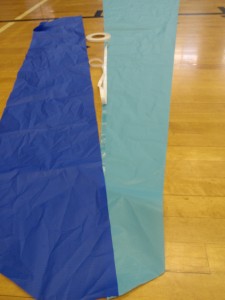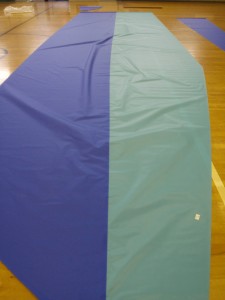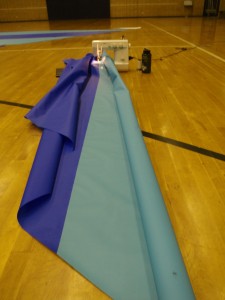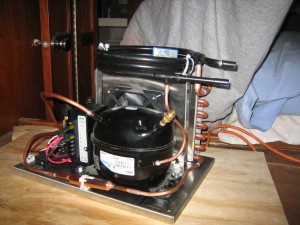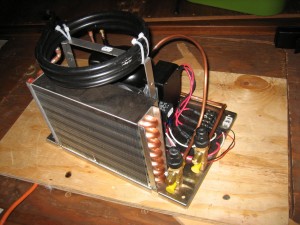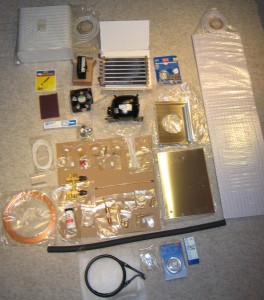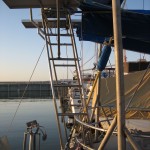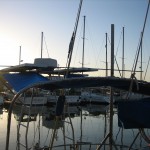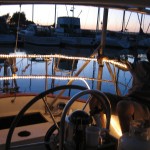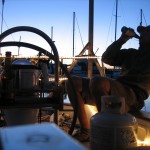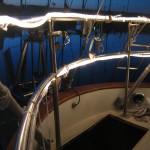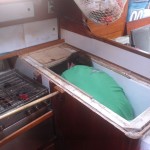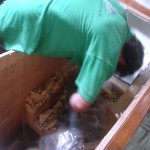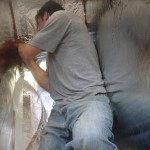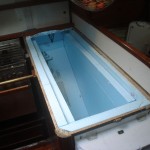Jan 12 2010
unromantic update
I don’t have the energy or passion for a well-written update this time, but I know there are at least a few people out there who are curious about us. Full disclosure: I just finished reading an idiotic book and drinking a cup of jonny walker following a full 10 hours of stupid fiberglassing so my mood is shitty.
-We moved out of our studio apartment over the holidays, while four friends visited and slept in our living room. Our guests were perfectly fine with the furniture and bed disappearing from underneath them (no kidding). Jon and Rishona came out to see the boat, work a bit, and meet us, because they are planning on joining us in the south pacific this summer, if all goes according to plan. Gary and Anna came out to california because they are awesome.
-We moved onto the boat, though half of the boat is intermittently unlivable (and I mean 1/4″ fiberglass dust snow all over everything toxic air to breathe unlivable). Our belongings get shuttled around on an hourly basis like all those tiles in that hand held game where there is a grid of jumbled number tiles that you have to move around to put them in order but there’s only one blank space to use so you have to move all of the other tiles that you don’t want out of the way to move the number you want into place and it turns out that that process is difficult enough that they invented a game around it. Fully 10% of my waking hours are occupied by moving the same stuff back and forth and around and around.
-As reported in the previous post, the knees of the boat came unbonded from the hull, a situation which justifies me giving a big middle finger to the fucking assholes who built this supposedly indestructible boat. The bomber reputation of the Valiant 40 is bullshit. Glassing the knees to the hull is second in importance only to actually having a hull in the first place, and the peons that glassed my knees to my hull did a shitty ass job of it and now I’m busting my ass to fix something that should have been included in the first 2,000 dollars of the much higher price of this boat.
-We were planning on leaving January 14th, and our good friends Pete and Ray bought plane tickets to fly out and join us (the only reason for the very specific jan 14th date) and help us sail down the coast for a month. Since it’s down to just Karen and I and a busted boat, I am incredibly grateful to have their experienced assistance to do the first (wet cold worst) month. Well, now that the boat is sucking a big fat one, I mailed Pete one of the chainplates that needs to be replaced and he’s making a new set for me. How’s that for a friend, right? I screw up their plans and as an apology he gets a hunk of metal in the mail to duplicate 8 times over for me and they don’t even give me a hard time for it? Damn good friends, that’s for sure. (I even called him this morning and greeted him with a “so I have this windlass, and the threads on the shaft are crossed . . .”) I owe them big. So now Pete and Ray changed their flights and we’re planning on leaving February 7th now. All I have to do is rebuild the boat before then, no biggie.
-Karen is being much more productively outspoken about our current situation in her booming blog, so please visit her site to get cheered up after reading this post.
I’m actually not all that bummed out as I sound, I’m just super exhausted and it just started raining and all I can think of is how many places it is undoubtedly leaking into the boat this very moment. A-we need to catch a break and B-we need to get the hell of out of this place, prontospeed.
